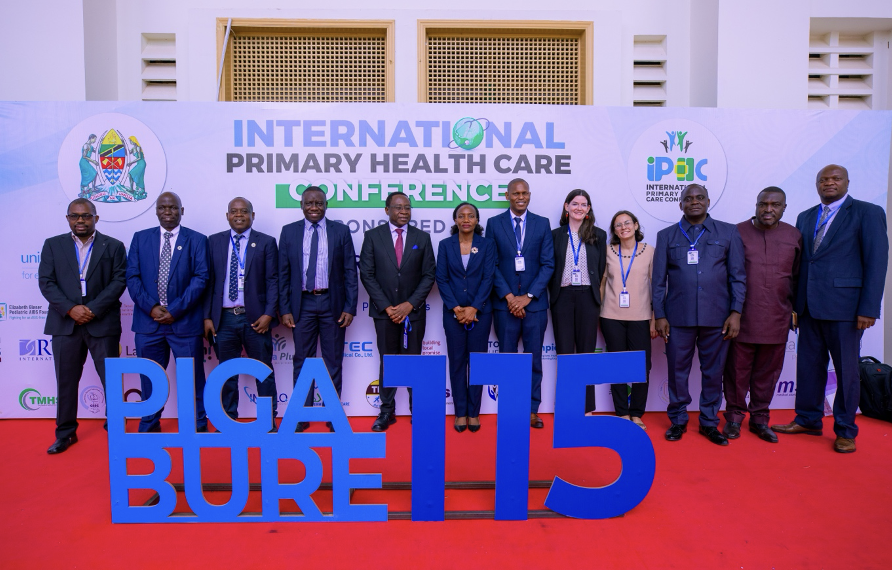Tanzania prioritizes primary health care for Universal Health Coverage, achieving progress in reducing under-five and maternal mortality. However, neonatal mortality stagnates. Despite financing challenges, Tanzania progresses towards sustainable health financing, requiring political commitment and collaboration for reform implementation.
Tanzania has long prioritized primary health care (PHC) as the pathway to achieving Universal Health Coverage (UHC) and pioneered several service delivery innovations with significant reductions in under five and maternal mortality and are on track to achieve SDG. Despite these improvements, neonatal mortality has stagnated over the past 15 years. Therefore, greater, and better investments are needed to improve quality of care and health outcomes.
To this end, the PORALG, the Ministry of Health, and UNICEF convened a symposium during the International Primary Health Care Conference in Dodoma, Tanzania in March 2024. This blog features the ‘what’ and the ‘how’ of sustainable financing for PHC can be achieved, as presented and discussed during the forum.
- What: sustainable financing for PHC that enables the transition from donor to domestic financing
- How: more money for health through increased fiscal space; more health for money, through more accurate costing and optimization of resources and making health care cheaper by investing in priority interventions.
What: Sustainable resources for PHC
International evidence shows that higher government spending is associated with better health service coverage. Over the past ten years, domestic expenditure for health in Tanzania has increased. However, its domestic healthcare spending remains lower than that of neighbouring countries and international benchmarks. Specifically, recent evidence revealed that despite significant increases in the past years in salaries and vital pediatric and maternal commodities, government spending on PHC is less than half of the required resources needed to deliver quality services according to national standards, with greater shortages for commodities procurement and at the dispensary level. Dr. Wilson Charles Mahera, Deputy Permanent Secretary Health, PORALG emphasised the study findings on the regional differences in service delivery productivity, where some regions have better health outcomes for the same spend.
As highlighted in the panel discussion, information is key to understanding the costs of PHC and identifying and addressing the funding gap. Inadequate resources slow down the achievement of national and international policy objectives. In addition, health care investments must focus on priority interventions that will make health care cheaper, e.g. vaccinating children against measles against responding to a measles outbreak, preventing HIV infection against ARV’s.
How: Revenue raising for PHC
The domestic revenue mobilisation study estimated the revenue-generating impact of various health tax policy reforms and modelled the public health impact of the proposed tax policy reforms. Specifically, the analysis focused on the revenue sources of the Equity Account under the Universal Health Insurance Act, examining alcohol, tobacco, and sugary drinks.
The study found that to expand the revenue base of the sector and, more broadly, the government, there are two scenarios to increase the tax rate by the projected inflation and GDP growth rate, and an additional 5%. While the additional revenues would not be sufficient to cover the PHC funding gap, if the Ministry of Finance decided to pursue this proposal and ringfence the additional revenues to fund the health sector, there would be enough resources to cover half of the existing health centers and all the health sector administration costs respectively. Learning from the region, notably, Zimbabwe, suggests that raising and ring-fencing domestic resources is feasible, through a recently-introduced Health Fund Levy through which five percent of the duty charged on airtime is ring-fenced to improve access to quality health care for all Zimbabweans.
How: Realising efficiencies for PHC
Sustainability cannot be achieved by implementing vertical programs. Therefore, the Ministry of Health, the President’s Office Regional Administration, and Local Government have implemented a comprehensive framework for service delivery integration. Where conversations are starting on integrated mentorship and supportive supervision, scale-up of integrated data management systems including electronic medical records is imminent. These operational reforms promoted by the MOH have been accompanied by efforts to harmonise planning and budgeting efforts to promote efficient resource utilisation. Additionally, there are opportunities to learn from the more efficient regions about approaches to utilise resources more effectively
We’re not starting from zero and never have been – Tanzania contributes a significant proportion of health financing but there is a high dependence, particularly in priority programs. We need more and need more efficient investment.
Ms. Elise Lang, Health Financing Advisor, USAID
As highlighted in the panel discussion, vertical programs have helped in achieving health outcomes when Tanzania was a low-income country. As Tanzania moves toward middle-income status sustainability concerns become more prominent. Vertical programmes encourage duplication and inefficiency and may overburden staff driving the necessity to transition to a whole system approach. This extends to health information systems (HIS) and the importance of data management and utilisation. Dr. Grace Magembe, Deputy Permanent Secretary, Ministry of health highlighted that “to be responsive to the needs of the people, we need data…but health workers are found in the middle of so many data collection tools.” This is inefficient and reduces the time available for serving patients, “we should not verticalize one human being.” Furthermore, there is a need to optimize technology such as the digitalization of HIS as national studies don’t answer basic questions in Tanzania which could be answered through a more reliable and efficient HIS at the PHC level.
I call on development partners to channel [their resources] through the government so we understand how much is available and what is needed. We need the real figures to transition.
Mr Meshack J. Anyingisye, Commissioner Budget, Ministry of Finance
Efficiencies extend to how funding is channelled to PHC. The Ministry of Finance further highlighted the need for development partners to channel their resources through the government’s systems, and not directly to projects. It is difficult to recognise health resources when this is done.
Improving domestic financing for healthcare is a choice of leadership. Most of the time health ministries speak amongst themselves, but we need a whole of government, whole of society approach.
Dr Paul Ngwakum, the Regional Health Advisor, UNICEF
Conclusion
While realising adequate, sustainable, equitable, timely and predictable financing for PHC is not straightforward, Tanzania is making significant steps in the right direction. Experience from neighbouring countries shows that increasing domestic investments in the health sector is possible. Nonetheless, continued high-level political commitment to place health at the center of the national agenda and an open and active engagement between PORALG, the Ministry of Health, the Ministry of Finance, and other health sector stakeholders are needed for the successful implementation of health financing reforms.


